Termites are a common problem for homeowners across California, causing millions of dollars in structural damage each year. With California’s diverse climate, multiple types of termites thrive throughout the state, each posing unique threats. From the destructive subterranean termites to the elusive dry-wood termites, it’s essential to know how to identify these pests and understand their behavior. Keep reading to learn more about these wood-destroying insects and how to protect your property from damage.
The Life Cycle of Termites in California
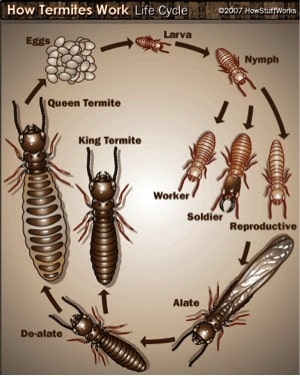
All termite species in California share the same basic life cycle, which consists of 3 key stages:
- Egg Stage: Termites begin as eggs laid by the colony’s queen. Subterranean termite queens can lay thousands of eggs daily.
- Nymph (Larvae) Stage: After hatching, nymphs are cared for by worker termites. As they grow, they molt and develop into one of the three vocations: workers who gather food, build tunnels, and care for eggs; soldiers who defend the colony from predators; or reproductives (alates) who grow wings and leave to state new colonies, shedding their wings after mating.
- Adult Stage: Once alates find a new site, they become a king and queen, starting a new colony where the queen lays eggs, continuing the cycle.
Understanding the 4 Common Types of Termites in California
California’s diverse climate, ranging from coastal regions to arid inland areas, creates an ideal environment for various types of termites. These pests, often called “silent destroyers,” can cause extensive damage to homes and properties before being detected. Understanding the types of termites in California, their habits, and how to identify them can help prevent costly infestations. There are many different types of termites in California. To determine if an infestation is present and the best course of action, contact a professional. The 4 most common types of termites in California include:
1. Subterranean Termites in California
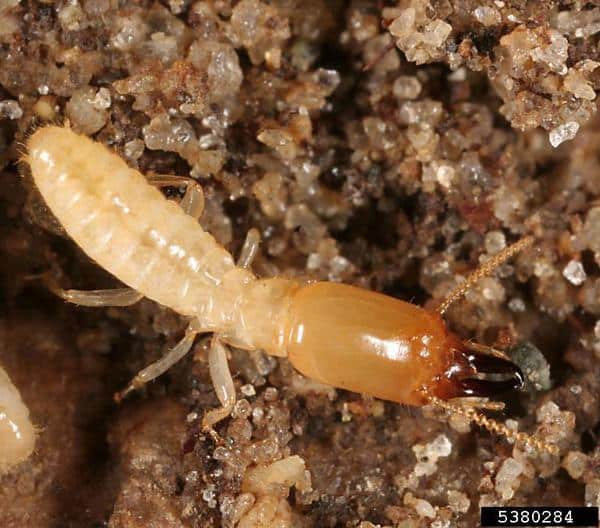
Subterranean termites are among the most common types of termites in California. They live underground and build intricate mud tubes to reach their food source, often the wooden structures of homes. Subterranean termites thrive in moist environments and are especially prevalent in Southern California, where the warmer climate allows them to flourish year-round.
How to Identify Subterranean Termites:
- Appearance: These termites are small, usually cream-colored or translucent, with long, slender bodies.
- Mud Tubes: Subterranean termites build mud tubes to protect themselves while traveling to and from their nests.
- Wings: During the swarming season, subterranean termites with wings are commonly seen as they search for new nesting sites. They are darker in color and shed their wings after finding a mate.
How Common are Subterranean Termites in California?
Unfortunately, subterranean termites are incredibly common, especially in Southern California, where the dry climate can force them to seek moisture from building materials. Property owners should regularly inspect their homes for termite activity, particularly near the foundation where mud tubes are often found.
2. Dry-wood Termites in California
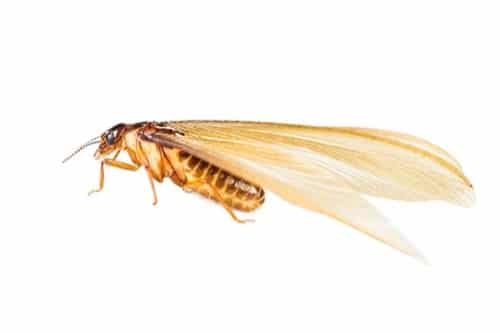
Dry-wood termites are another prevalent species of termites in California. Unlike their subterranean counterparts, dry-wood termites do not need contact with soil to survive. Instead, they live directly inside the wood, making them harder to detect and prevent. Dry-wood termites are common in coastal areas in Southern California, where the mild climate is perfect for their nesting needs.
Identification of California Dry-wood Termites:
Drywood termites are often mistaken for ants but can be distinguished by their straight antennae and uniform wing size.
- Appearance: Dry-wood termites are larger than subterranean termites, with a darker, reddish-brown body. Their wings are equal in size and can be seen during swarming periods.
- Frass: One of the telltale signs of a dry-wood termite infestation is the presence of frass or termite droppings. These small, wood-colored pellets can often be found near windows, doors, or baseboards.
- Wings: Dry-wood termite wings are seen during the swarming season, usually in late summer or early fall. They’re more likely to be found in warmer areas, as swarms tend to increase with temperature.
Flying termites in California are often dry-wood or subterranean termites during their reproductive phase. These flying termites are searching for new areas to start colonies, and their appearance signals a mature infestation. Homeowners should take swift action if they notice flying termites in or around their homes.
Are Dry-Wood Termites Common in California?
Dry-wood termites are common in both the northern and southern parts of the state. The dry conditions and plentiful food sources, such as wooden homes and structures, make California an ideal habitat for these pests.
3. Western Dry-wood Termites in Southern California
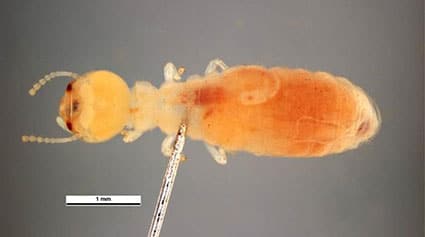
A subcategory of dry-wood termites, Western dry-wood termites are one of the most destructive termite species in California. They are especially prevalent in Southern California, where the mild temperature and minimal rainfall create perfect conditions for their survival.
Identifying Western Dry-wood Termites:
- Size and Color: Western dry-wood termites have a similar appearance to other dry-wood termites, with reddish-brown bodies and translucent wings during the swarming season.
- Wood Damage: These termites leave behind smooth, clean tunnels within the wood they infest. If you spot hollow-sounding wood or wood that crumbles easily, it could indicate a Western dry-wood termite problem.
- Frass: Similar to other dry-wood termites, they leave behind wood-colored droppings (frass), which can accumulate near infested areas.
How Common Are Western Dry-Wood Termites in California?
Termites in Southern California are often of the Western dry-wood variety due to the favorable climate. For those wondering how common termites are in California, these termites are a significant threat to homes in coastal regions and should be monitored closely.
4. California’s Dampwood Termites
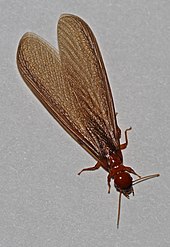
Although less common than subterranean and dry-wood termites, dampwood termites are also found in California. As their name suggests, these termites prefer to infest wood with high moisture content. Dampwood termites are typically found in damp, decaying wood, such as fallen logs, stumps, and areas of homes where leaks have occurred.
How to Identify Dampwood Termites:
- Appearance: Dampwood termites are larger than both subterranean and dry-wood termites, often growing up to 1 inch long. They have a brownish or tan color.
- Moisture Dependence: These termites require high moisture levels to survive, making them more common in homes with plumbing issues or water damage.
- Wings: Like other termite species, dampwood termites have wings during their swarming stage. However, because they are less common indoors, sightings of California dampwood termites with wings are rare.
Are Dampwood Termites Common in California?
While dampwood termites are not as widespread as other California termites, they can still cause significant damage to wooden structures if conditions are favorable. Homeowners should regularly inspect areas prone to moisture, such as basements and crawl spaces, for signs of dampwood termite activity.
Termite Control and Prevention in California
Preventing termite infestations starts with understanding the types of termites in California and knowing how to identify them. Regular property inspections, including looking for mud tubes, frass, flying termites, dropped wings, and hollow-sounding wood, can help catch termite activity early before extensive damage occurs.
Identification of California termites can be difficult without experience, so consulting a pest control expert is recommended. Whether dealing with subterranean, dry-wood, or dampwood termites, prompt action is necessary to prevent significant damage. Protecting your home from termites and other pests is crucial in California’s termite-prone environment.
At Preventive Pest Control SoCal, we offer comprehensive termite inspections and treatments along with solutions for ants, spiders, rodents, mosquitoes, cockroaches, gophers, wasps, and more. Serving Orange County and the Inland Empire, our personalized subscription plans ensure year-round protection for your home or business. Don’t wait until the damage is done–contact us today to schedule a free termite inspection and let our experts safeguard your property from pests before they become a problem.
